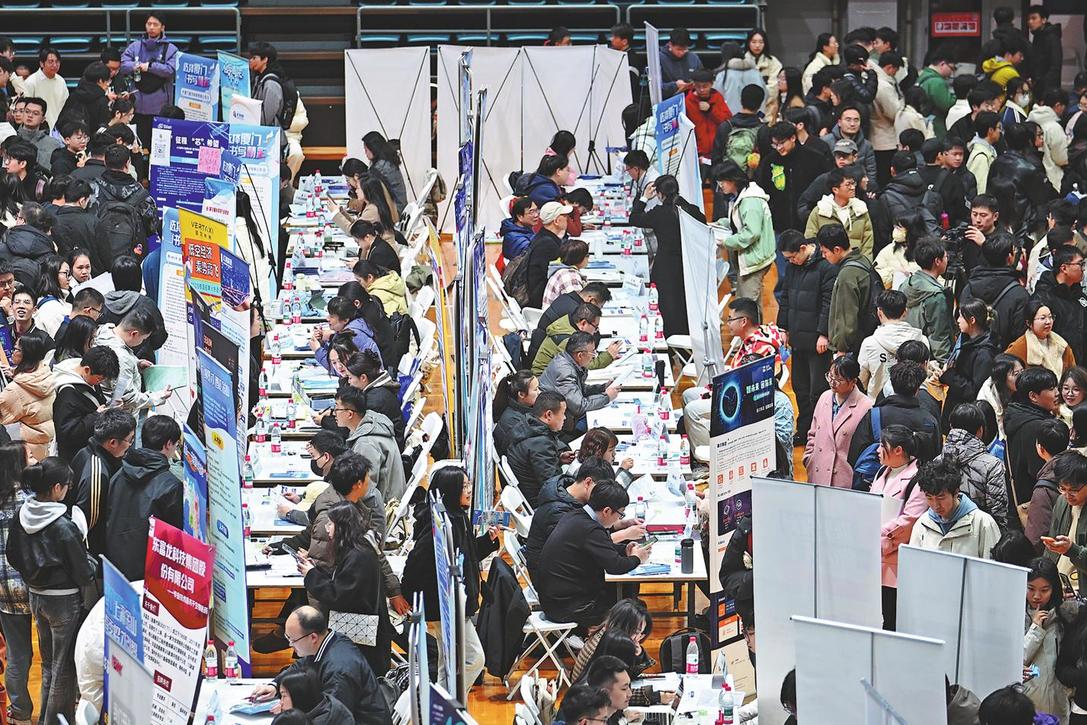14th Five-Year Plan highlights savings, growth
By Cai Fang and Du Yang | CHINA DAILY | Updated: 2020-11-09 09:12

China's social security system is still in the process of continuous improvement, and because the pressure of aging population is becoming more and more obvious, reducing or at least not raising the replacement rate of pensions is still an inevitable trend. This will inevitably affect people's savings behavior, and the specific impact on the savings rate will be shaped by the content and strength of the reform.
In addition to demographics, there are other factors affecting the residents' savings rate.
China's urbanization process is not only an important driving force to expand employment and promote the growth of residents' income, but also a significant stimulus to expand consumption, especially after the completion of the reform in social protection system and public services, as more coverage of the migrant population will stabilize their expectations for the future and increase their consumption at present.
Speaking of the impact of changes in savings rates on the macroeconomic scene, there are some characteristics in the relationship between savings rate and economic growth in China.
First, the savings rate is a driver of economic growth, so China's long-term high-speed growth has an inevitable correlation with its high savings rate.
Second, private sector savings play a key role in promoting economic growth. On the other hand, government savings do not, which means that the decline in government savings in recent years, as well as a rising private sector savings rate, will have a positive impact on economic growth.
Third, the economic growth will affect only the government savings rate but not the private sector savings rates. China's government revenues are closely linked to economic growth performance-and the government spending is becoming more rigid.
Therefore, a higher economic growth tends to generate higher government savings. In contrast, private sector savings behavior depends on longer-term structural factors and is not sensitive to short-term economic growth.
In response to the COVID-19 pandemic this year, all nations have put forward different stimulus programs to mitigate the impact. For the majority of the countries, the level of savings, given the level of economic development, determines a country's ability to respond to crises.
An analysis of the OECD countries and some of the larger economies of the G20 members shows that countries with high savings rates and countries with low savings rates have both shown a positive relationship between savings rates and the responsiveness of fiscal stimulus plans.
According to the fiscal stimulus plans that have been announced so far and the savings rates of each country in 2018, those with higher savings rate obviously have more proactive plans, reflecting that more national savings give you a stronger hand to carry out stimulus plans, to cushion against the impact of the COVID-19 pandemic.
Based on the information collected so far, we have reached the following understanding:
First, China's high savings rate is typical and has laid a solid foundation to carry out more proactive fiscal policy to handle the COVID-19 epidemic.
Second, to deal with the impact of the COVID-19 epidemic on their national economy, the governments concerned should not only offer a helping hand to the micro and small-sized enterprises hit hard by the virus, but also arrange income-payment plans to safeguard the livelihood of the low-income families.
Third, the COVID-19 epidemic will have an impact on the savings behavior of residents and businesses, and the motivation for preventive savings is likely to increase in the future.
In conclusion, China should seek a growth pattern that matches the trend of the savings rate. When demographic dividends and the old growth patterns are not leading to sustainable development, the link between high savings rates and economic growth will no longer be strong.
On the contrary, high savings rates can have a negative impact on the dynamics of economic growth by squeezing consumption, and leave impact on the economic momentum.
China's unique population policy has become an important factor affecting the savings rate, and the rapid aging of the population will be an important factor leading to the decline of the savings rate.
In the near-to-medium term, the trend of aging population has been difficult to change, but timely changes in population policies will help form a more balanced population structure in the future and reduce fluctuations in savings rates.
Last but not least, financial institutions should provide comparable financial services to small and medium-sized enterprises, private enterprises and giant corporations, and eliminate the inequality problems, which will help improve the efficiency of capital allocation and form a reasonable savings behavior.
The comment above is based on the Jingshan Report published by the China Finance 40 Forum, a think tank.
The views don't necessarily reflect those of China Daily.
- Highlights of President Xi Jinping's explanatory speech on CPC proposals for 14th Five-Year Plan, targets through 2035
- China seen as global investment stabilizer
- Xi emphasizes crucial role of consumption
- A village cadre's brilliant idea finds way into China's grand development blueprint
- People-centered philosophy highlighted in drafting development proposals























